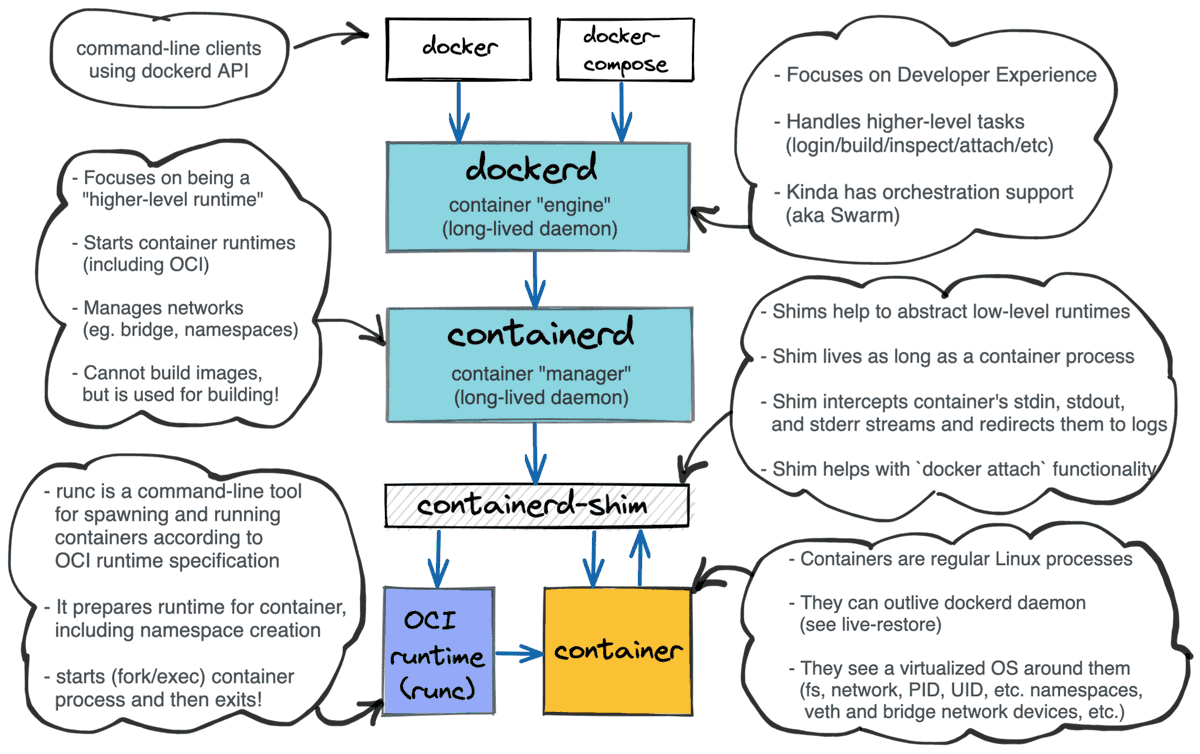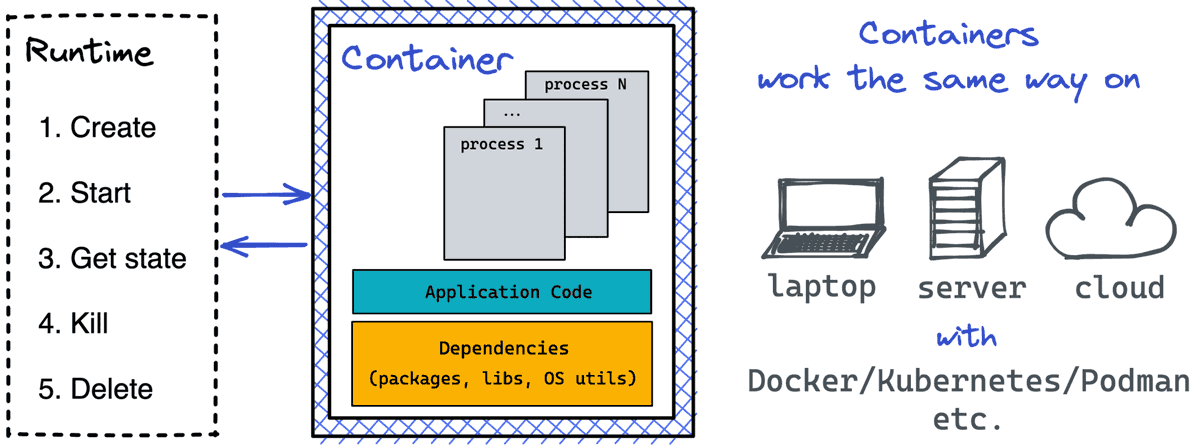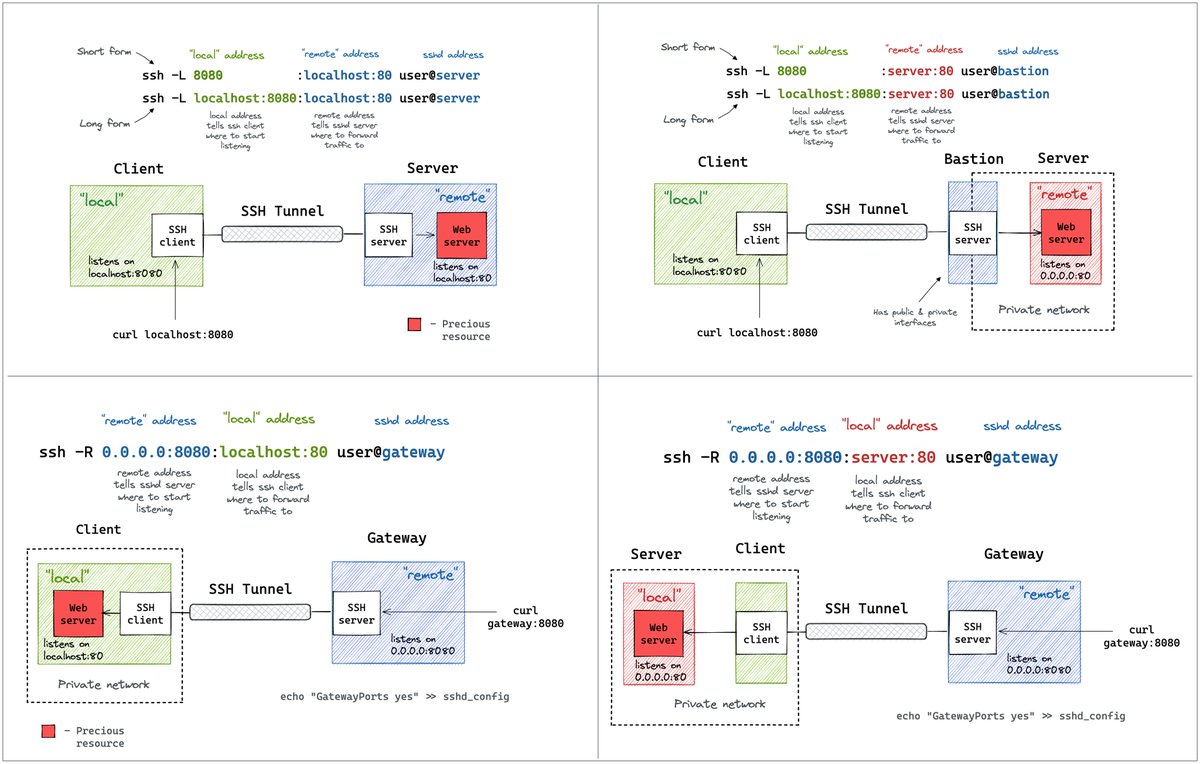
Software Engineer. Educator. Entrepreneur. Bootstrapping https://t.co/9b6sZ2UVQj - a learning-by-doing platform to master Linux, Containers, and Kubernetes 🚀
12 subscribers
How to get URL link on X (Twitter) App


 Then, Docker containers showed up.
Then, Docker containers showed up.

 2. Local Port Forwarding with a Bastion Host
2. Local Port Forwarding with a Bastion Host

 To set up a baseline, I recommend starting with Docker.
To set up a baseline, I recommend starting with Docker.

 When you launch Nginx (or any other service), it opens a socket on a certain address - e.g., 172.17.0.3:80.
When you launch Nginx (or any other service), it opens a socket on a certain address - e.g., 172.17.0.3:80.

 2. Virtual Ethernet Devices (veth) - a means to interconnect network namespaces.
2. Virtual Ethernet Devices (veth) - a means to interconnect network namespaces.

 1⃣ Server-Side Service Discovery
1⃣ Server-Side Service Discovery

 Learn about different port forwarding techniques and how container runtimes implement them in this heavily illustrated blog post 👇
Learn about different port forwarding techniques and how container runtimes implement them in this heavily illustrated blog post 👇
 2/ The "container = VM" simplification was helpful at first but it quickly became inadequate.
2/ The "container = VM" simplification was helpful at first but it quickly became inadequate.

 1. Running a single process on just one server.
1. Running a single process on just one server.

 1. Learn the Kubernetes API Basics - Resources, Kinds, and Objects
1. Learn the Kubernetes API Basics - Resources, Kinds, and Objects

 Containers are a lightweight VM replacement.
Containers are a lightweight VM replacement.

 2/ 🤔 Ever deployed services using virtual machines (VMs)? If so, you'll find Kubernetes not so different.
2/ 🤔 Ever deployed services using virtual machines (VMs)? If so, you'll find Kubernetes not so different. 

 Picture this: You want to run a [Linux] container on your macOS or Windows. You'll need a Virtual Machine because only a real Linux kernel can provide the building blocks - namespaces and cgroups
Picture this: You want to run a [Linux] container on your macOS or Windows. You'll need a Virtual Machine because only a real Linux kernel can provide the building blocks - namespaces and cgroups

 1. Learn CSS Flexbox Layout.
1. Learn CSS Flexbox Layout.

 Following high-level Docker tutorials and how-tos kept me thinking containers are just lightweight virtual machines for quite a while.
Following high-level Docker tutorials and how-tos kept me thinking containers are just lightweight virtual machines for quite a while.

 Through the networking lens, every container represents a tiny little server with its own IP address.
Through the networking lens, every container represents a tiny little server with its own IP address.
 Brush up your containers and networking skills and create an elegant solution!
Brush up your containers and networking skills and create an elegant solution!

 First, a little bit of computer networking theory 🤓
First, a little bit of computer networking theory 🤓

 I researched the available tools and non of them satisfied my needs fully.
I researched the available tools and non of them satisfied my needs fully.
 1. Computer Networking Introduction: Ethernet and IP
1. Computer Networking Introduction: Ethernet and IP
 1. Simple Local Port Forwarding.
1. Simple Local Port Forwarding.